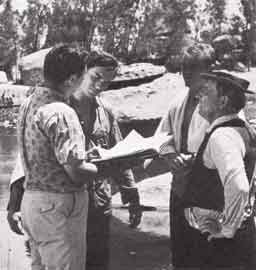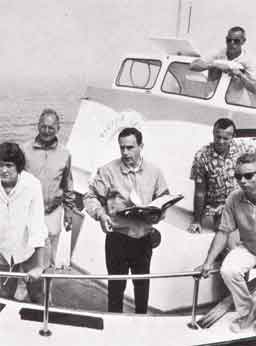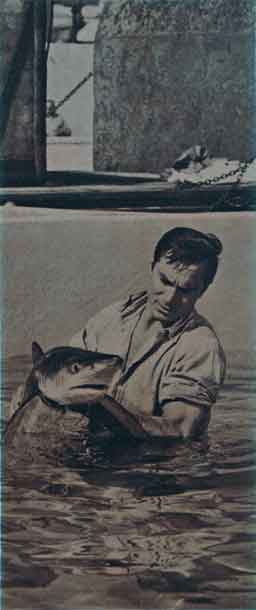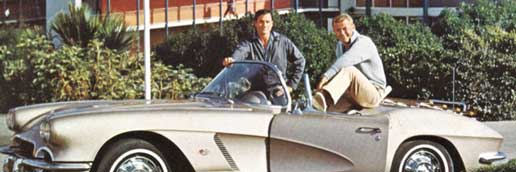

How would you like to spend nearly 70% of the year far from the place you call home? That's what the production company of Route 66, which stars Martin Milner, George Maharis and their Corvette, did in 1961.
Out of the 365 days that members of the crew marked off battered calendars and meticulously recorded on pencil-lined charts, 254 of them were spent hundreds, often thousands, of miles from home. Also carefully recorded were another 86 days spent filming in the Los Angeles area, where the wives and children of most of the 66 crew marked the days on calendars of their own. And the one thing that all concerned can count on is that this season won't be any different.

There's a reason for this nomadic existence, and even the show's most constant viewers are probably not consciously aware of it. Route 66 is the only television series filmed 100% on location. This fact, alone, makes it unique among today's TV offerings. But Route 66 stands by itself in more ways than one.
It is also the only TV series in which an automobile has played more than an incidental role. Corvette was a part of the original concept of co-creators Bert Leonard and Stirling Silliphant. In the words of Silliphant, who has written or rewritten all but a few of the scripts, "The Corvette was important in creating the image we wanted. lt helped to establish the character of Tod Stiles and Buz Murdock right at the outset." ln defense of the fact that it was not a purely commercial choice, Silliphant points out, "We invested $150,000 in the pilot film before we had a sponsor. The Corvette has been part of the idea from the start."
Route 66 is filmed entirely on location by design, not chance. Location shooting is more expensive than comparable studio production. And it is fraught with problems and pitfalls. However, as Silliphant says, "lt costs a few dollars more, but it comes off better. When you film on location, everything is more authentic and more believable. The actors feel it, too, and they respond."
In order to achieve the quality of realism which has become a hallmark of the series, the Route 66 crew has logged more than 80,000 miles in slightly more than two seasons of production. They have traveled through 36 states. And they have filmed episodes in and around such widely separated towns as Gloucester, Massachusetts, and Grant's Pass, Oregon, and such unlikely spots as Biloxi, Mississippi; Kanab, Utah; Grand Isle, Louisiana; Cordova, New Mexico; and Lake Havasu, Arizona. Gasoline for the trucks, alone, has been burned to the tune of more than $60,000.
The equipment and manpower necessary to put such a show on the road, and keep it there for as much as seven weeks at a time, are staggering. It is literally a studio on wheels. The equipment is lugged in four huge vans: one for wardrobe, makeup and toilet facilities; one for camera, sound and lighting equipment; one for props and special effects; and an open van to carry the two Corvettes, plus a station wagon, sedan and convertible.
The cast and crew run between 40 and 60 people. Each is an expert. He has to be. The pace is wicked. A full hour episode is shot in just seven days. As often as not, the script is received the day before filming. Final revisions are still being made while it is being filmed. And it is not unusual for guest stars to be finally confirmed the day before production is scheduled to begin. The stresses and strains are such that the same director rarely handles two episodes in a row.
Because of the many uncertainties of shooting entirely on location, it has become a Route 66 maxim that "the unexpected can be expected." Nothing goes according to plan. At least, not for long. And the man who cannot roll with the punches, and improvise on the spot, is headed pell-mell for a nervous collapse. Even when the locations are relatively close to home, the unusual is the order of the day.
It's no "ho-hum" existence for the cast and crew of Route 66. One day they're getting laughs by
getting wet (top left). The next finds the entire crew 2-1/2 miles out to sea (right). Just a
day later (bottom left), George Maharis is playing nursemaid to a live shark.
See the original page 23 here...




